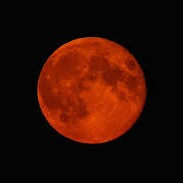What is another common name for Sirius?
If someone would decide to come out at night to try to find known star in the night Earth sky, equipped just with his eyes and nothing else, it would be safe to assume that he would see the star that stands out the most because it happens to be the brightest in our sky. Sirius is one of such brightest stars that we can see with an unaided eye.
Sirius was used by our great ancestors to predict several events such as floods and warm coming. Its periods of rise and set were often used in weather predictions.
For ancient Egyptians Sirius played a great role - it helped oracles to predict floods of the River Nile. After these blessed floods Egyptians could start agricultural work. Eventually, Sirius became a sacred star and embodied Isida, an Egyptian goddess of fertility and farming.
Ancient Greeks and Romans called Sirius "Dog Star". The thing is that Sirius is the main and brightest star in the constellation of the Great Dog. Greeks associated it with the constellation of Orion located nearby. In Greek mythology Orion was a hunter and after his death he was placed on the sky together with his dog.
In both Rome and Greece, the first Sirius rise occurred at the end of June. This was the beginning of a heat wave when the best way to spend time was to have a rest. Romans called this period "dog's days" or "dies caniculares" (from canis – a dog) or simply vacations.











